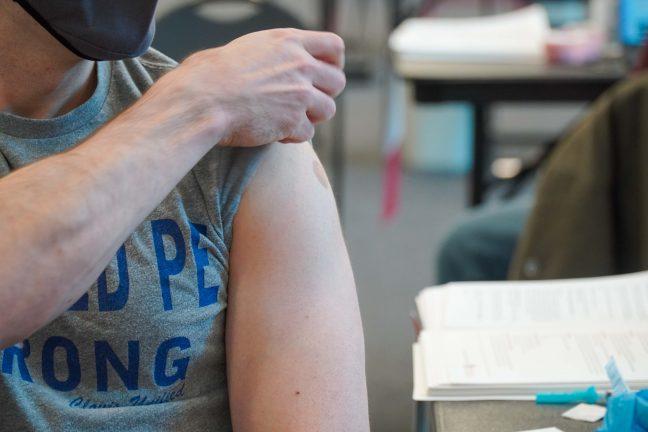Wisconsin’s vaccination rate for kindergarteners has fallen sharply, from 8% non-compliant immunization in 2014 to 11% this year. This downturn is particularly alarming because of Wisconsin’s historical above-average national vaccination rates, according to the Wisconsin Department of Health Services. The national vaccination rate against measles, mumps and rubella for kindergarteners is approximately 92.7%, while Wisconsin’s rate stands now at just 84.8%, according to the CDC’s October Vaccination Rate Report.
Public health officials warn that lower vaccination rates could lead to a resurgence of vaccine-preventable diseases, which have largely been controlled in recent decades, according to the WDHS. Dane County recorded its first measles case in 24 years in April as part of a national trend of increased outbreaks, according to NBC News.
University of Wisconsin Professor of Pediatrics and Human Development & Family Studies Dr. Dipesh Navsaria said several factors contribute to this decline but misinformation about vaccines plays a significant role.
“There’s been a lot of misinformation that has been put out there about vaccinations for quite a few years,” Navsaria said. “The key message that we need to be emphasizing over and over and over again is vaccines … save lives.”
Vaccines prevent 2-3 million deaths globally each year and there are vaccines available that prevent more than 20 life-threatening diseases, according to the World Health Organization.
Currently, Wisconsin is among one of the top states in terms of the number of children that are not coming in with being fully immunized Navsaria said. The declining vaccination rates among kindergarteners in Wisconsin reflect a multifaceted issue that needs immediate attention, Navsaria said.
Herd immunity for measles is typically cited at around 95% due to its high rate of infection. This means even small dips in the number of vaccinations can quickly shatter herd immunity and lead to a resurgence of the disease. This threshold makes the most vulnerable populations even more susceptible to diseases, Navsaria said.
In 2023, more than 14.5 million children under the age of one did not receive basic vaccines, about 2.7 million more than in 2019, according to the CDC. This can likely be attributed to the surplus of misinformation and fear surrounding the COVID-19 vaccine, Navsaria said.
Professor of Population Health Sciences Ajay Sethi said the politicization of public health and vaccines during the COVID pandemic caused a great deal of misinformation about vaccines to spread and the media has been unable to keep up with correcting the volume of false information.
“It’s especially problematic that lots of misinformation is spread deliberately by credentialed people or [those] in positions of authority or influence who stand to profit or make gains … when people begin to question vaccines,” Sethi said.
When respected figures spread false or misleading information, it can have a ripple effect that undermines trust in public health initiatives, Sethi said. These individuals often wield considerable power in shaping public opinion, and their statements can carry more weight than those of less well-known experts, Sethi said.
Addressing this issue requires a concerted effort to improve media literacy and critical thinking among the public, the FDA and the CDC will only approve and recommend vaccines when they are proven to be safe and effective, Sethi said.
The three Cs model is a good way to think about vaccine hesitancy — Convenience, Confidence and Complacency, Sethi said. People become overwhelmed with vaccine misinformation and it can be fatiguing.
“Every parent deserves to have their concerns taken seriously and heard,” Navsaria said. “The goal of your child’s health care provider is the same goal that parents have … to keep your child healthy.”
Vaccine hesitancy may also be linked to the recent outbreak of whooping cough, also known as pertussis, in Wisconsin, according to Fox 11 News.
Wisconsin has reported 625 cases of the disease this year, which is 12 times the total number from last year, when there were only 51 cases, according to Fox 11 News.
Experts say the DTaP vaccine is recommended for children aged 7 and under, while the TDaP vaccine is intended for teens and adults. Both vaccines protect against diphtheria, tetanus and pertussis.
Parents should feel comfortable talking to physicians about their fears and questions when it comes to vaccines, Navsaria said. Almost all clinics actually lose money on immunizations, however, this financial loss does not deter healthcare providers from offering vaccinations, as they view it as a fundamental responsibility, Navsaria said.
Ensuring high vaccination rates is essential not only for protecting our children but also for safeguarding the most vulnerable members of our society, Sethi said.
“Getting recommended vaccines reduces our and our loved one’s chances of becoming sick, needing medical care and hospitalization, and for some diseases — even death,” Sethi said.


